By Ed Pfueller, UOAA
There is no doubt the world would be a better place with more wound, ostomy and continence (WOC) nurses. For many, WOC nurses are the first sign of hope after a life-changing surgery. The right nurse can provide confidence when there is doubt, and comfort when there is pain or fear.
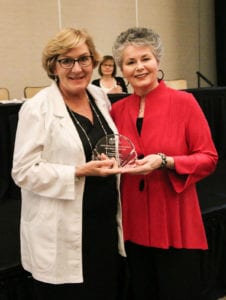
2017 Recipient of the UOAA WOC Nurse of the Year Award Frances Wilson with President Susan Burns.
April 15-21, 2018 marks WOC Nurse Appreciation Week and this year is also the 50th Anniversary of the Wound, Ostomy and Continence Nurses Society™ (WOCN®). For those of us at UOAA these nurses are so much more than medical professionals. They are our affiliated support group leaders, advocacy champions, cheerleaders, advisors, friends, national leaders, speakers, stoma clinic volunteers, event organizers, fundraisers and so much more.
It is one of our great joys (but also one of our biggest challenges) to select just one recipient of our WOC Nurse of the Year Award. Unsung and unrecognized nurses can be found in every corner of our national network of support.
Prepare to be inspired by these testimonials from our Affiliated Support Groups who nominated this year’s amazing group of nurses. Feel free to share with us in the comments a special nurse who has helped you on your journey and learn a bit about the people behind the credentials.
Anne Marie Knudsen
South Bay Ostomy Support Group in California
Anne has served as the group’s program coordinator 330 months (or 30 years and 11 months the nominators say.) She encourages doctors to utilize ostomy visitors to make a difference from day one. She provides free home visits to members and encourages all to attend meetings.
“She is always available, a mentor, has a compassionate heart, loves all ostomates and is an inspiration. She gives free time to the group and uses her own money to present gifts of appreciation to speakers. She will visit all who are desperate for care at no charge. I have the greatest respect for Ms. Knudsen she is an angel for sure!!”
Gina Day
Ostomy Support Group of the Poconos in Pennsylvania
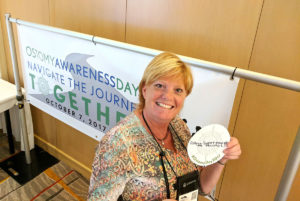
Gina founded the group last year bringing much-needed ostomy support to the region. Gina provides educational programs for the group and heavily promotes the group in her area by hosting a Run for Resilience Walk Ostomy 5k walk, appearing in local media stories and last year even got the mayor to declare Ostomy Awareness Day.
“Her dedication, persistence and passion brought an awareness to our community that it so greatly deserves. Her positive personality and motivational disposition is an inspiration for our members. Gina Day connects with group members in an indescribably sincere manner. The support group slogan is “You will never be alone” and Gina sees to it that people are not. Gina fills the void and disconnect that some patients feel after they leave the hospital through her support and forums to share stories. Her outstanding expertise has benefited those living with an ostomy in our area greatly.”
Charlotte Popovich
Ostomy Association of Metro Denver
Charlotte is a tireless volunteer with a deep connection to the doctors and ostomates in her community judging by the pages of praise that accompany her nomination. They say she has an instinct for knowing when patients need that extra push of confidence to take matters into their own hands.
“Her strongest attribute is her total commitment to the ostomy community’s needs. It is amazing her attention to our new members’ medical and emotional needs as well as being available to them 24/7 at a moment’s notice. Her rate of referrals from surgeons is unmatched. After working all day, she voluntarily attends all evening support group meetings and does question and answer sessions to address patient concerns.”
And in a Letter from Dr. Sandosh Nandi
“The dedication to her craft is unparalleled. She is diligent, caring, knowledgeable and thorough. She has helped so many patients and the praises they sing go on and on. She not only teaches patients about their ostomy but helps them with social and mental hurdles as well. She takes calls on vacation and stops by someone’s house for an emergency change in the middle of the night. She is nothing short of amazing. Big heart and a very caring tough love approach.”
Lara Leininger
Triangle Area Ostomy Association in North Carolina
Lara is known as her group’s cheerleader in her role as a WOCN support nurse. She supports guest speakers and is available to participants for one on one questions after formal meetings. She also makes her contact information available should questions arise from participants between monthly meetings. She supports the health and wellness of her group through her commitment to living a healthy lifestyle through exercise and helps others to believe that an ostomy does and should not limit a person’s life in any way.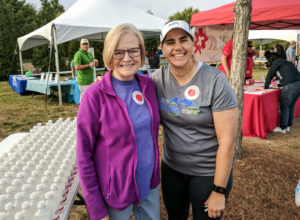
“Lara, in her many years of working as a WOCN for the University of North Carolina Hospital, has shown love, compassion, care and kindness to her many ostomy patients and has shown ongoing support for her WOCN colleagues in her community. Lara has been so devoted to the ostomy community that in 2014 she co-founded the Wanna War One Ostomy Awareness 5K in Durham, NC. This empowering event now known as the Run For Resilience Ostomy 5K, supports the educational and advocacy programs of the UOAA. The event will be celebrating its fifth anniversary on October 2018 and will represent nine locations across the country. Lara has also been a dynamic volunteer and speaker at two UOAA national conferences and has shared the story of caring for her mother, an ostomate, through the Phoenix Magazine, Spring issue 2017. As stated in this article from her colleagues “Lara is a person and nurse of great care. She fills with emotion when talking about her love for her patients. When her mom became ill and it was evident that she was facing ostomy surgery, Lara dove deep into the journey with her mom. This is what Lara does and who she is”.
Angela Ladner
Gulfport Mississippi Ostomy Support Group
As part of the first UOAA support group in Mississippi Angela secured the location at Memorial Hospital for groups and arranges for local home health, pharmacies and manufacturer participation with the group.
“She encourages patients to participate in the group’s activities mentally and emotionally with body image issues. She is a liaison with physicians to encourage participation and outreach. She is caring and supportive of her population. Willing to assist in the needs of the patient and the family. She helps the indigent population with resources for supplies. She also coordinated an effort to assist flood victims in Houston with ostomy supplies. She is respected by patients, colleagues, and families.”
Kathryn Baxter
United Ostomy Support Group of Orange County NY
Kathy has been a been a devoted liaison, exceptional WOC/ET Nurse for the group for over 25 years. The group counts on her expertise and knowledgeable background as a PA in the busy NYC Hospital Mt.
Sinai.
“Kathy” as we all know her has always from the very first time she came to a meeting
has been interested in the complete rehabilitation of every ostomate. She finds ways often to
resolve the most difficult ostomy problems for those who think they will never have a resolution.
Kathryn finds the time to help in programming and acquisition of products for the Chapter.
If it weren’t for her support over the years this Chapter would cease to exist. We are
grateful for all the time and talent she has brought to us clinical evaluations, information support on newest equipment and surgeries, caring and advising meeting participants on what is available medically as well as psychologically.

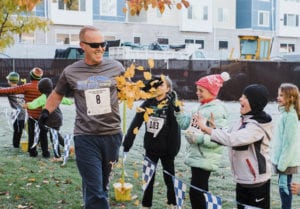
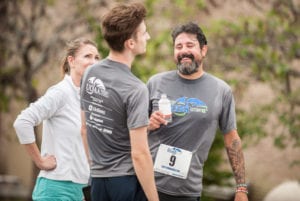
 The event drew runners from hundreds of miles away and again took place on the scenic American Tobacco trail and featured a popular silent auction and sponsor tents. The always popular stroller division again made this truly a family affair.
The event drew runners from hundreds of miles away and again took place on the scenic American Tobacco trail and featured a popular silent auction and sponsor tents. The always popular stroller division again made this truly a family affair.
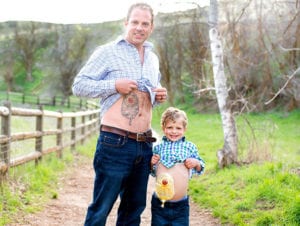
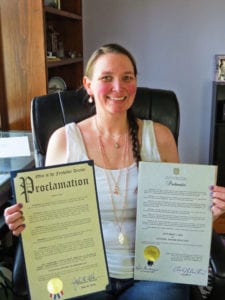
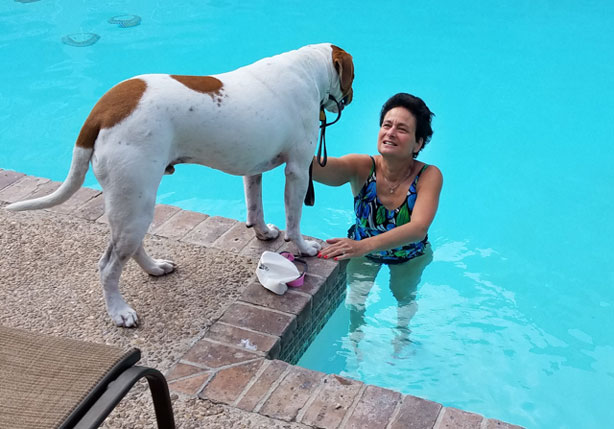 After healing from ostomy surgery, people of all ages and types enjoy swimming, surfing scuba diving or just relaxing in a hot tub. We understand the anxiety from worrying about leaks can keep some people out of the pool. There are no ostomy specific restrictions to swimming in public places. “Swimming has made me stronger both physically and emotionally. It is a great outlet and has made me even healthier. I feel and look more beautiful” says Lynn Wolfson of Florida. Lynn has two ostomies and swims in triathlons. Here are some solutions to common concerns.
After healing from ostomy surgery, people of all ages and types enjoy swimming, surfing scuba diving or just relaxing in a hot tub. We understand the anxiety from worrying about leaks can keep some people out of the pool. There are no ostomy specific restrictions to swimming in public places. “Swimming has made me stronger both physically and emotionally. It is a great outlet and has made me even healthier. I feel and look more beautiful” says Lynn Wolfson of Florida. Lynn has two ostomies and swims in triathlons. Here are some solutions to common concerns.
